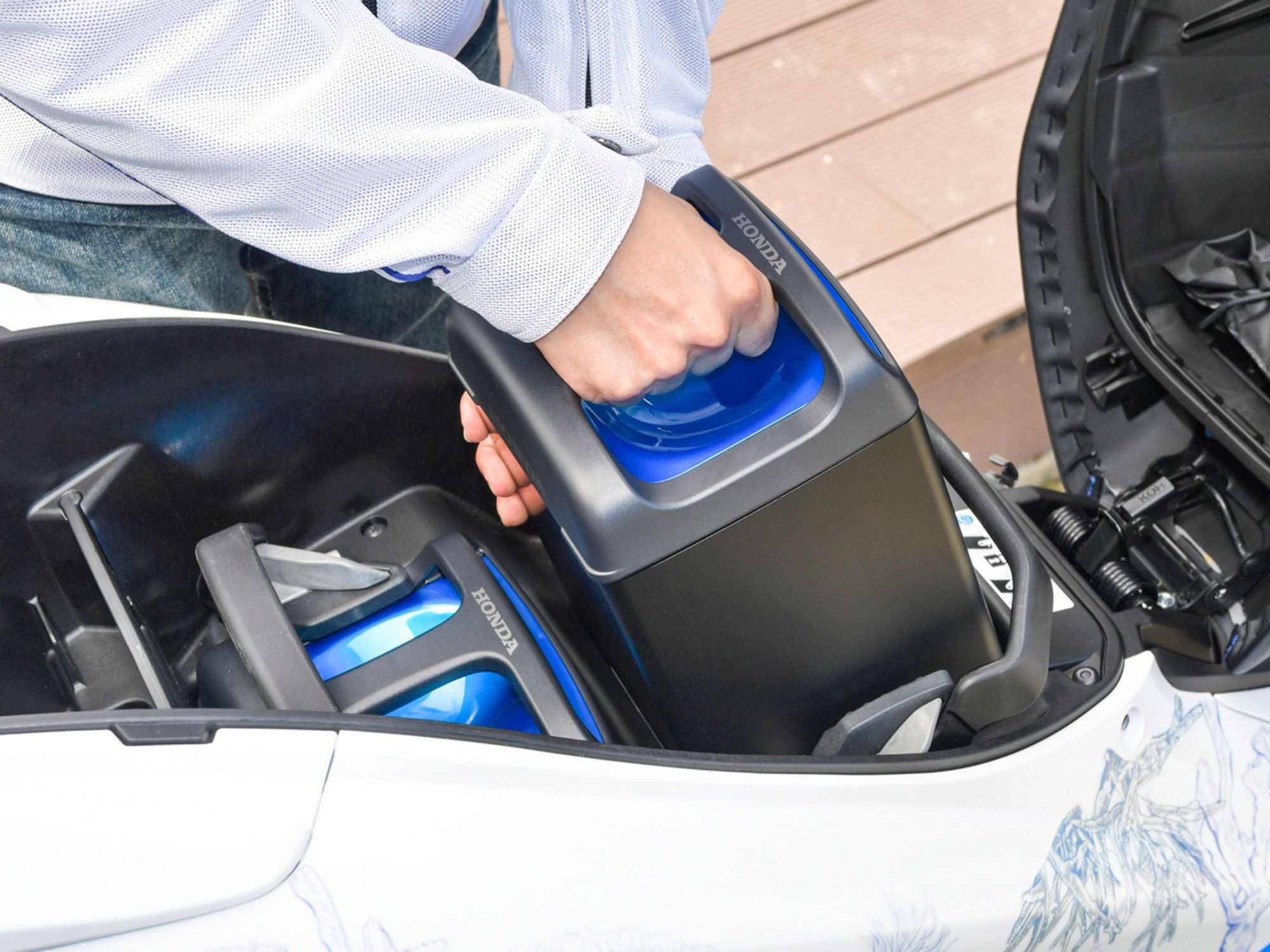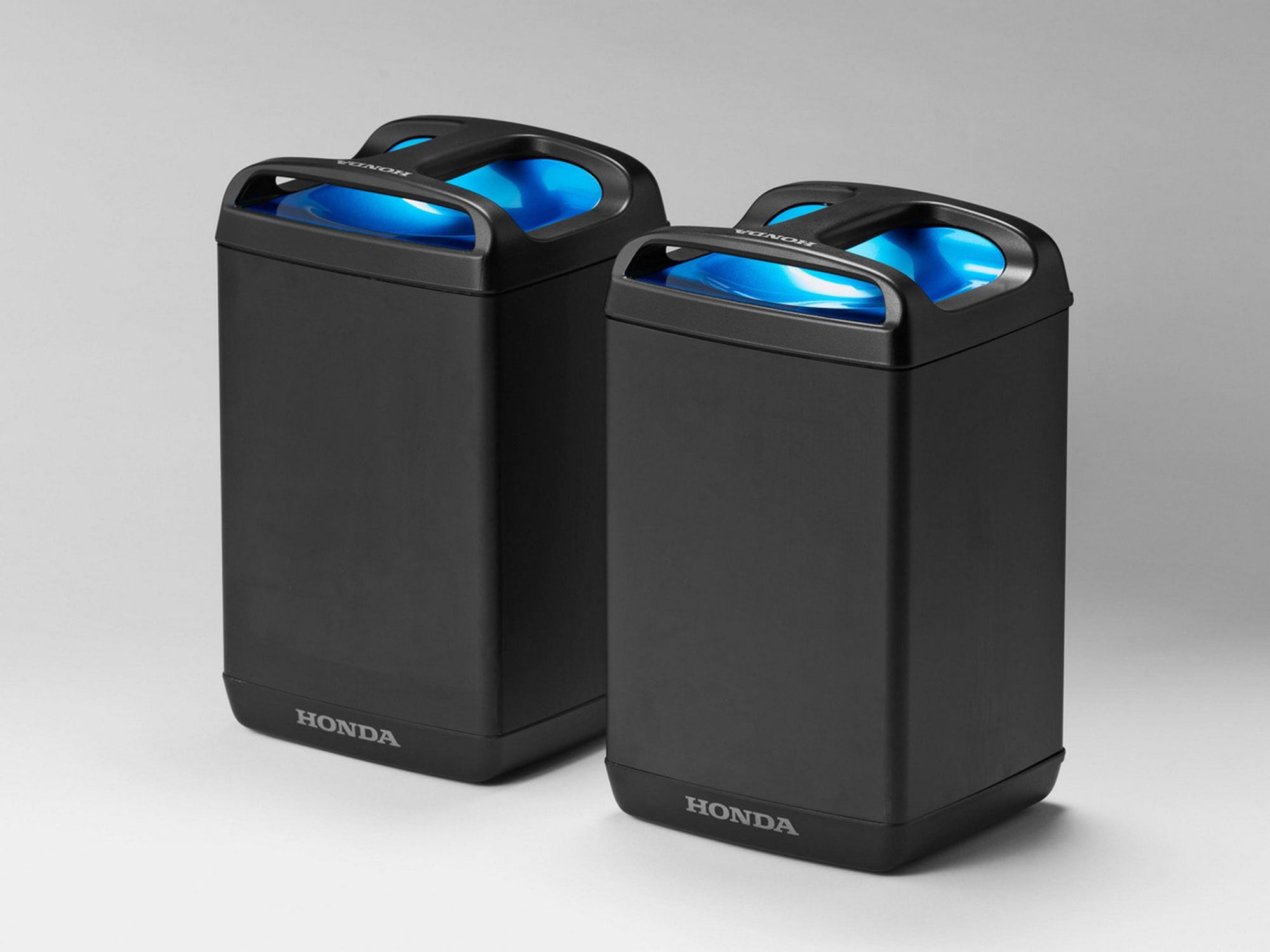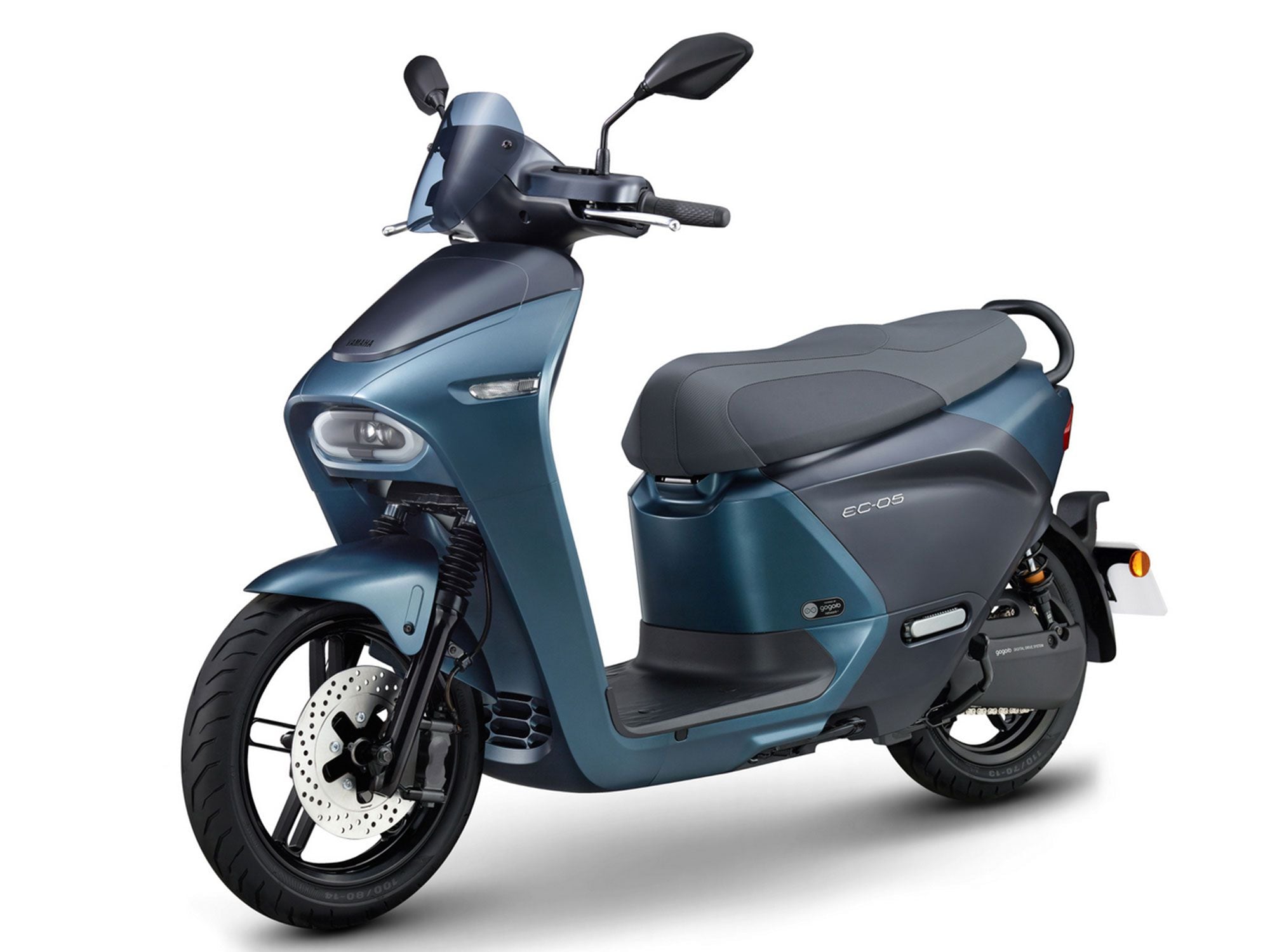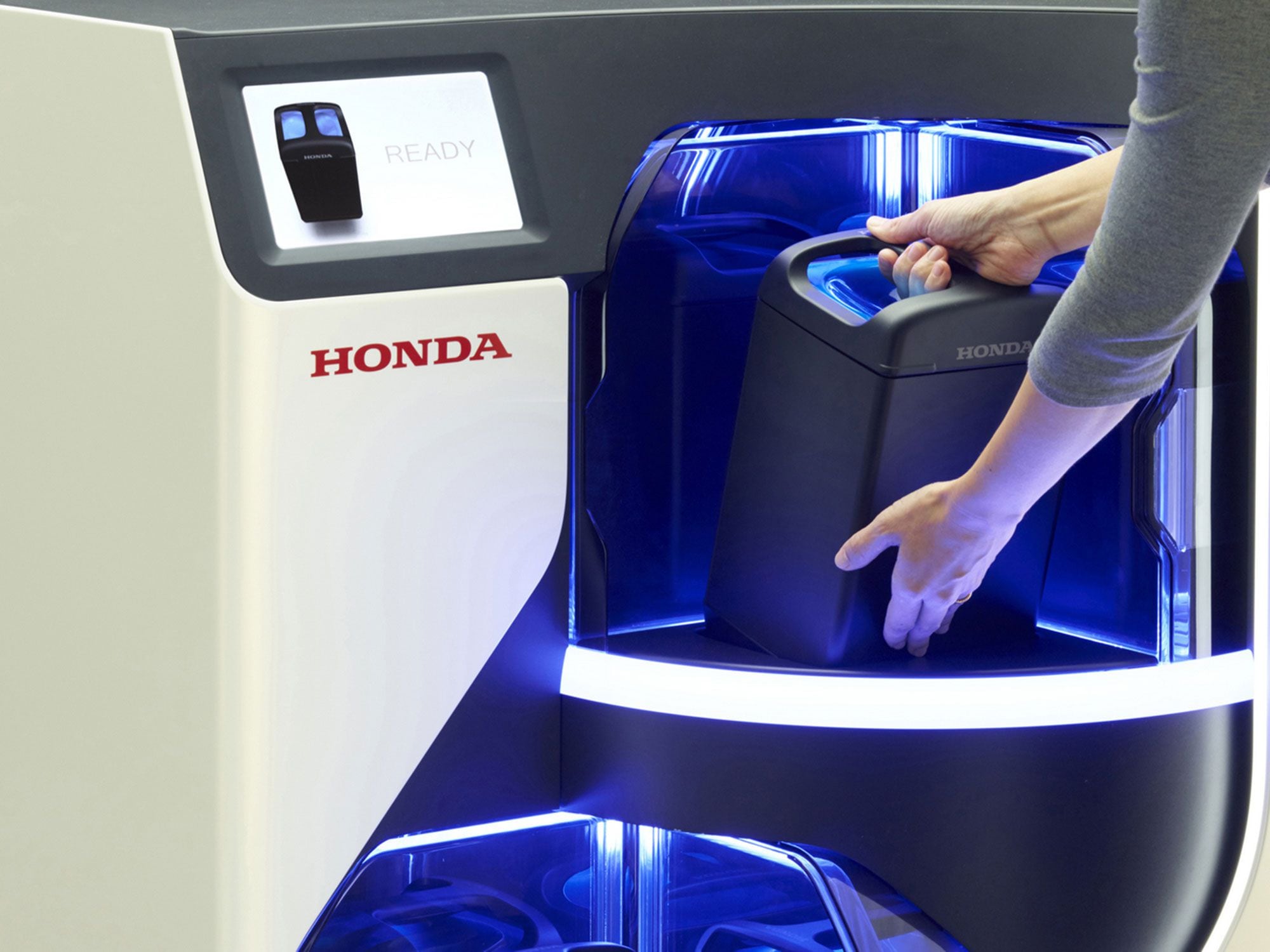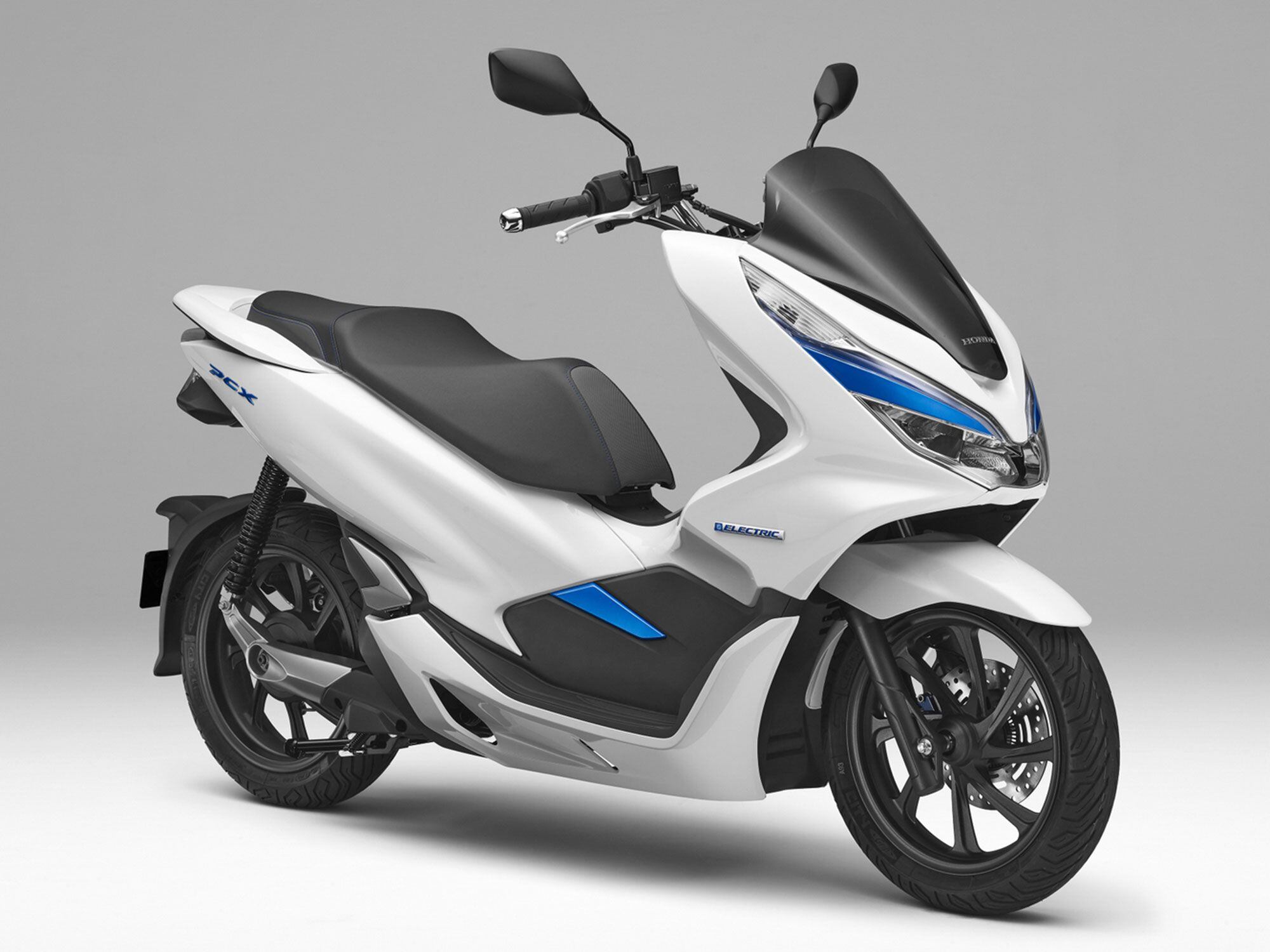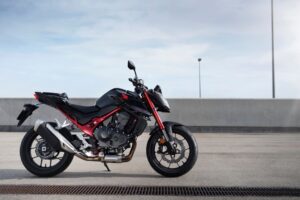Four of the biggest motorcycle manufacturers are joining forces to develop a universal standard for swappable electric batteries. (Honda/)While the world is increasingly aligned in the belief that electric vehicles are going to replace combustion-engined machines in the years to come, there are still huge questions over how to implement the changeover and what the supporting infrastructure should look like. Now four of the world’s most powerful motorcycle makers have signaled their intention of banding together to develop a universal standard for swappable electric motorcycle batteries, in a move that could bring a new level of clarity to how the future will look.
Swappable batteries like these on Honda’s PCX scooter could potentially solve the issues of range anxiety, weight, and even performance. (Honda/)Electric bikes are becoming increasingly convincing mobility tools, whether you’re looking at low-performance scooters for urban use or high-end machines that capitalize on the instant torque and acceleration that electric power offers, but the challenge of recharging remains a significant hurdle. Among those urban users who might benefit most from electric scooters, many don’t have access to garages or off-road parking, making recharging at home impossible, and riders looking to use electric motorcycles for longer, faster trips away from cities are inevitably put off by the limited range and slow recharging of the current crop of machines.
RELATED: 2021 Electric Motorcycles With the Best Range
Swappable batteries are potentially the answer for both groups, but for the idea to be a success it’s essential that manufacturers hammer out a standardized battery pack to allow for the setup of widespread infrastructure. It’s not a new idea; we’re all used to the idea of standardized battery cells in consumer electronics. However, that acceptance did not come quickly; the original D cell has been with us since 1898, the AA emerged in 1907, and the AAA appeared in 1911, but it took decades before each was accepted as standard. By creating an alliance to develop standardized swappable motorcycle batteries, Honda, KTM (and its Husqvarna subsidiary), Piaggio, and Yamaha are hoping to speed up that process.
Yamaha’s EC-05 scooter already utilizes a swappable battery network based on a Gogoro design. (Yamaha/)Swappable batteries were once seen as the solution for all sorts of electric vehicles—even Tesla originally wanted to create a network of automated stations that would remove the batteries from the underside of its cars and replace them with freshly charged versions. But for cars the idea has failed to take off, thanks largely to the sheer size of the packs and the specific shapes each required to suit their corresponding vehicle.
For bicycles the idea has been much easier to achieve. In Taiwan, electric scooter firm Gogoro already has a network of more than 2,000 GoStations where you can swap your bike’s battery for a fresh one, instantly replenishing its range for a small fee. Yamaha’s own electric scooter, the EC-05, is based on the Gogoro design, and Honda has been pursuing swappable batteries with its PCX electric scooter (available in parts of Asia), hoping to create an infrastructure for universal battery packs that can be used in scooters, bikes, quads, and even lawn mowers.
Piaggio’s Vespa Elettrica uses a removable battery pack too, and KTM’s E-Ride models have featured swappable batteries for several years. So all the firms involved in the new consortium are clearly convinced that the idea is a good one, and a standardized battery that they could all share would make it much better.
Standardized batteries would allow for a more accessible charging infrastructure, perhaps utilizing something like this swap setup. (Honda/)The advantages of a swappable battery go beyond simple convenience. In theory it’s relatively simple to set up a support infrastructure—perhaps by installing battery swap and charging facilities at existing gas stations—and once buyers are confident that a fully charged battery pack is always within reach, the problem of range anxiety evaporates.
You might, for instance, be unwilling to buy an electric bike with a 100-mile range if it’s going to take an hour or more to replenish the battery, but if you could swap in a fresh pack in a matter of seconds, it’s no longer such an off-putting issue. From there, the benefits spiral in a virtuous circle: The bike can be smaller and lighter, achieving the same performance from a less energy-hungry motor and thus increasing its range. Less weight also means better handling, while a smaller battery pack gives the potential for greater luggage space.
What’s more, separating an electric bike from its battery means you’re not going to be left behind as battery technology improves. Provided the newer, better cell still meets established standards in terms of size, shape, connections, and voltage, your bike actually improves on pace with technology. Similarly, the use of standard cells means multiple types of bike should be able to benefit. A moped-sized model might use a single battery pack, a scooter may have two, while larger, longer-range bikes could have three, four, or more of them.
Besides convenience, removable batteries also mean your vehicle will more readily keep up with advances in technology. (Honda/)Speaking about the new consortium, which is due to start work later this month, KTM’s CEO Stefan Pierer said: “Sustainability is one of the key drivers to the future of mobility, and electrification will play a major role in achieving this goal. For powered two-wheelers the constraints of electric drivetrains regarding range, charging time, and initial cost are still evident. To overcome these challenges and provide a better customer experience, a swappable battery system based on international technical standards will become a viable solution. Considering the entire life cycle, a widespread application of batteries compliant with a common standard will support secondary use as well as circular economy. We are glad to be part of the Consortium as we strive toward our goals in the emobility sector.”
Noriaki Abe, managing officer, Motorcycle Operations at Honda, adds: “The worldwide electrification effort to reduce CO2 on a global scale is accelerating, especially in Europe. For the widespread adoption of electric motorcycles, problems such as travel distance and charging times need to be addressed, and swappable batteries are a promising solution. Considering customer convenience, standardization of swappable batteries and wide adoption of battery systems is vital, which is why the four member manufacturers agreed to form the Consortium.”
“With the signing of this letter of intent,” Michele Colaninno, chief of strategy and product of Piaggio Group says also, “the signatories show their proactiveness vis-à-vis the major concerns of their customers and the political priorities as regards the electrification of vehicles. An international standard for the swappable batteries system will make this technology efficient and at the disposal of the consumers. Finally,” concluded Michele Colaninno, “a strengthened cooperation among manufacturers and institutions will allow the industry to better respond to the main challenges of the future of mobility.”
Yamaha’s Takuya Kinoshita, chief general manager of Motorcycle Business Operations, concludes: “I believe the creation of this Consortium holds great significance not just for Europe but the world as we move toward establishing standards for swappable batteries for light electric vehicles. I’m confident that through work like this, the technical specs and standards that currently differ by regional characteristics or the state of the industry in different markets will be unified, and, in the future, will help lead toward maximizing the merits of electric power for customers on a global level.”


